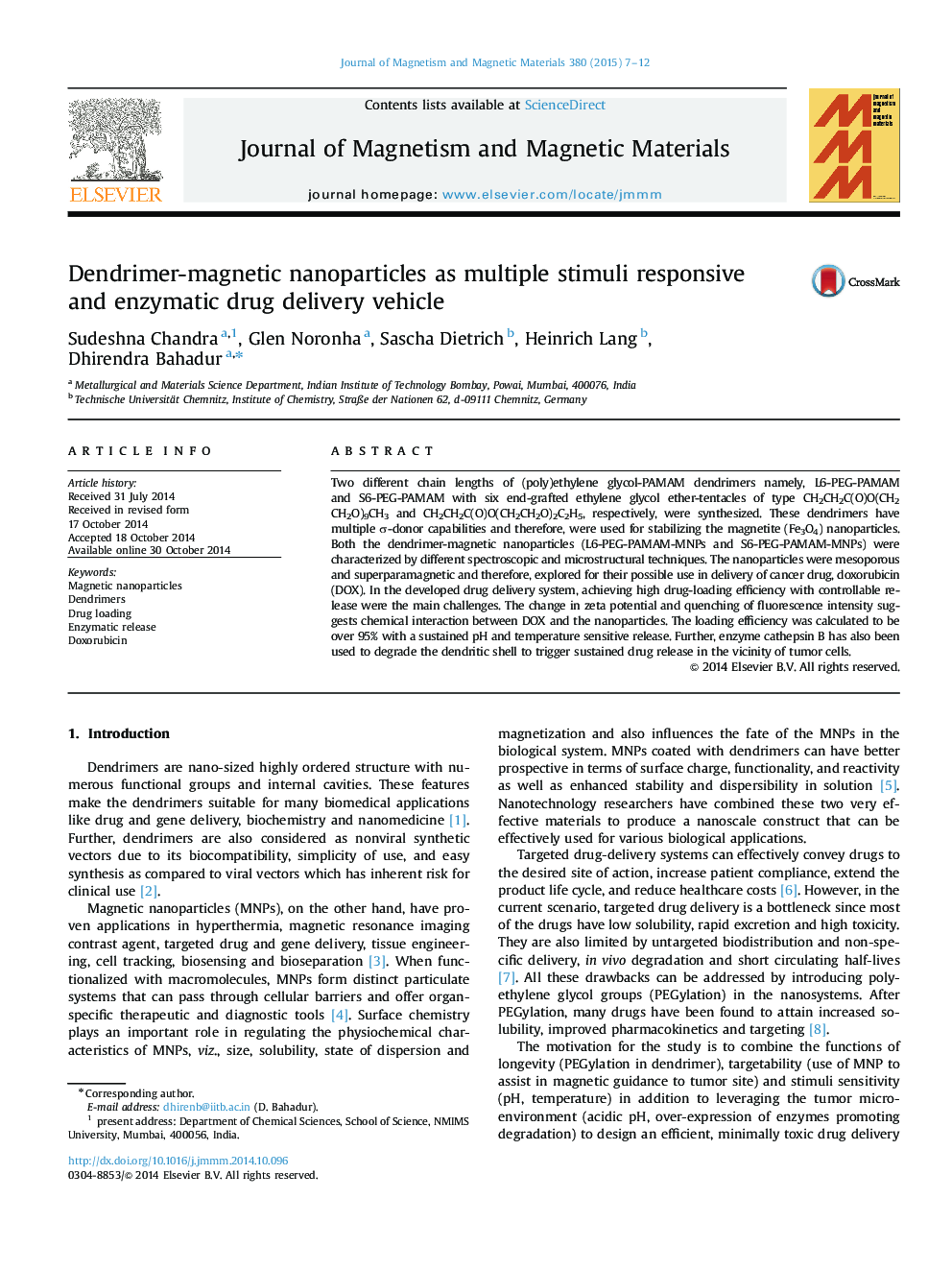| Article ID | Journal | Published Year | Pages | File Type |
|---|---|---|---|---|
| 1798849 | Journal of Magnetism and Magnetic Materials | 2015 | 6 Pages |
Two different chain lengths of (poly)ethylene glycol-PAMAM dendrimers namely, L6-PEG-PAMAM and S6-PEG-PAMAM with six end-grafted ethylene glycol ether-tentacles of type CH2CH2C(O)O(CH2CH2O)9CH3 and CH2CH2C(O)O(CH2CH2O)2C2H5, respectively, were synthesized. These dendrimers have multiple σ-donor capabilities and therefore, were used for stabilizing the magnetite (Fe3O4) nanoparticles. Both the dendrimer-magnetic nanoparticles (L6-PEG-PAMAM-MNPs and S6-PEG-PAMAM-MNPs) were characterized by different spectroscopic and microstructural techniques. The nanoparticles were mesoporous and superparamagnetic and therefore, explored for their possible use in delivery of cancer drug, doxorubicin (DOX). In the developed drug delivery system, achieving high drug-loading efficiency with controllable release were the main challenges. The change in zeta potential and quenching of fluorescence intensity suggests chemical interaction between DOX and the nanoparticles. The loading efficiency was calculated to be over 95% with a sustained pH and temperature sensitive release. Further, enzyme cathepsin B has also been used to degrade the dendritic shell to trigger sustained drug release in the vicinity of tumor cells.
